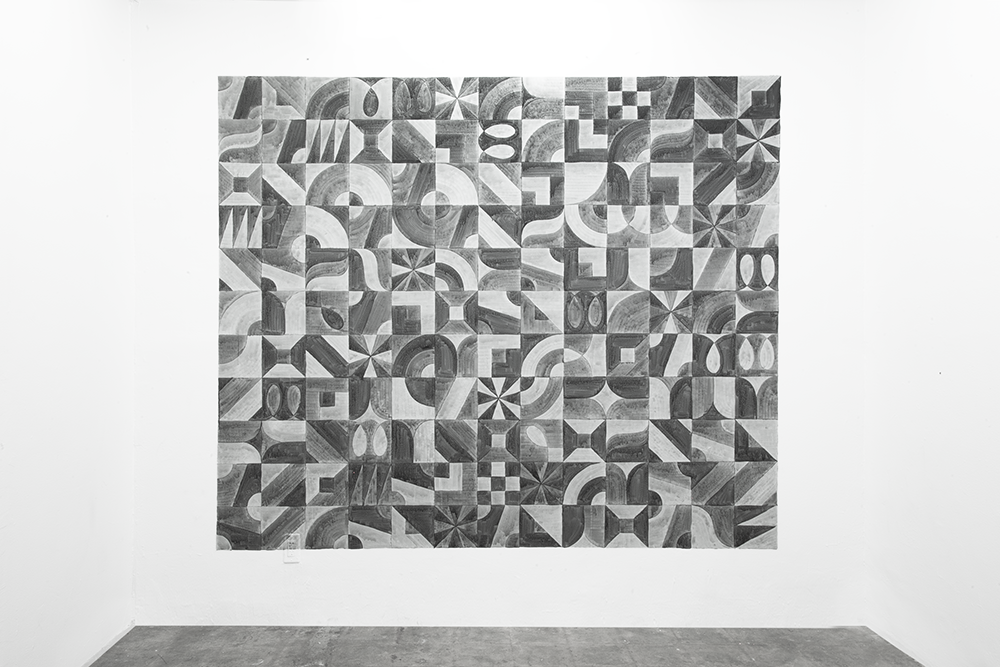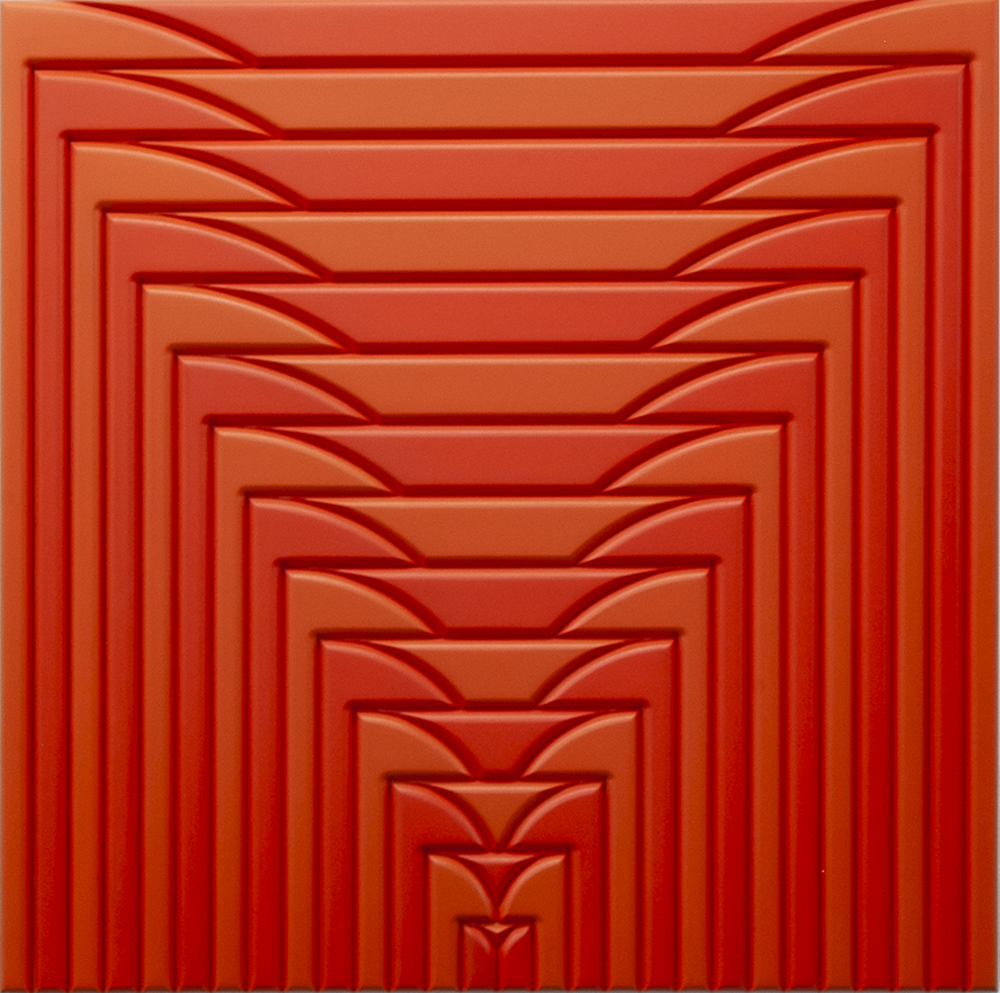Psychedelic experience has some distinct qualities. One may experience hallucinations of shifting yet repetitive imagery. Random objects become supercharged with symbolic meaning. Reality dissolves into the purely visual. Time itself is revealed as an abstract conceptual category, and one is inundated with eruptions of extreme emotions like love, joy, terror and anxiety. Alvaro Ilizarbe’s work hits all of these marks. His show, “I Love You,” includes an edition of chocolate bars infused with psilocybin mushrooms, available for purchase. Cast from a small wooden relief, titled Smiling With You In Mind (2023), the piece feels a bit gimmicky and secondary to the show until—with the creeping strangeness of shrooms kicking in—it becomes a Rosetta Stone for unlocking the exhibition. Ilizarbe’s wall reliefs and sculptures are quintessentially psychedelic in their own way while bearing little resemblance to genres that we think of as “psychedelic art.”
The formal presence of the show hits first. The wall reliefs and sculptures are composed of glyph-like symbols in grids and bulging convex parallel strips, looking a bit Gothic and sci-fi—like a cross between Finish-Fetish Minimalism and ancient Sumerian cuneiform. These were designed on a computer, printed with a CNC router and finished by hand with sandpaper and acrylic airbrush paint. Although they are made from wood, they have a surreal plastic quality, as if replicating the virtuality of 3D renderings. The contoured surfaces and plastic sheen create highlights and shadows in smooth gradients—it is hard to tell what precise shade they are; one only discerns colors under specific light. As students of Josef Albers know, this is how color works. Nevertheless, Ilizarbe makes this quality of experience visceral: the sense of materiality dissolves into pure visuality.

Alvaro Ilizarbe, I LOVE YOU (THINGS I WANTED TO SAY AND DIDN’T BUT NOW I DID), 2023. Courtesy of SADE LA
You can also sense time dissolving here. Ilizarbe credits a trip to Alhambra, a palace complex in Granada, Spain, famous for its Islamic architecture, as a major inspiration. Despite the modern fabrication methods, links to conceptual art and the Finish Fetish sensibility, there is a clear link to ancient decorative traditions in Ilizarbe’s work. This appetite for hallucinatory yet geometrically rigorous patterning must have been hard-wired into our central nervous systems a long time ago. Not unlike the effects of fungi grown in cow dung, this connection to art from nearly a millennium ago is mind-expanding, collapsing our sense of historical time.
More than a little reminiscent of Sol LeWitt’s wall drawings, the shapes in these pieces are derived from a cipher of Ilizarbe’s own devising. Twenty-six square glyphs inscribed with straight lines and simple curves represent letters of the alphabet. Still, it is impossible to imagine a Conceptualist like LeWitt giving his work an emotive title like “I Love You (Things I Wanted To Say And Didn’t But Now I Did).” Here, the rational and the poetic collapse into each other. Objects are tethered to ideas and intense feelings outside their literal ambit. These uncanny effects cannot quite be captured in language. I suppose then, the word “trippy” will have to suffice.


